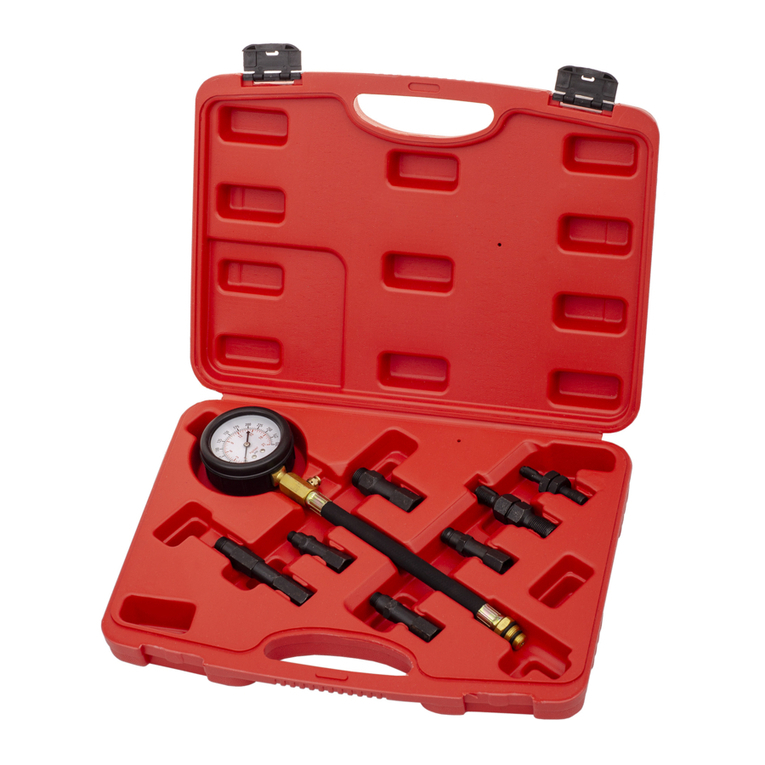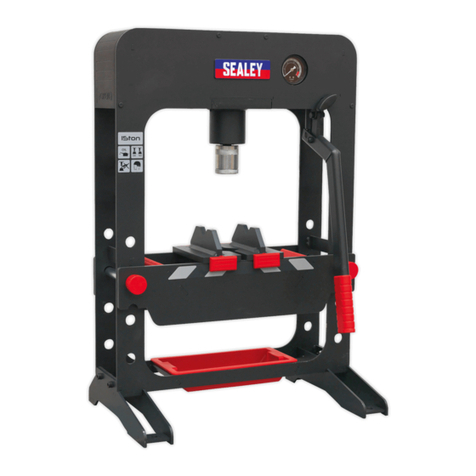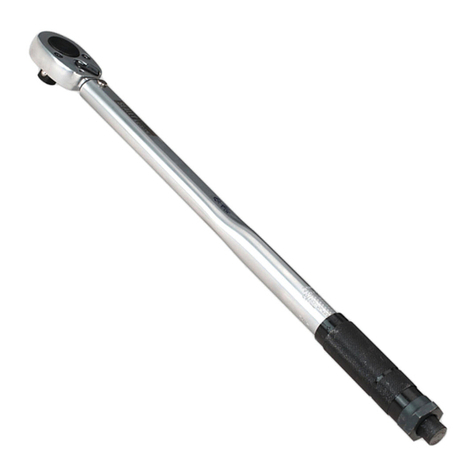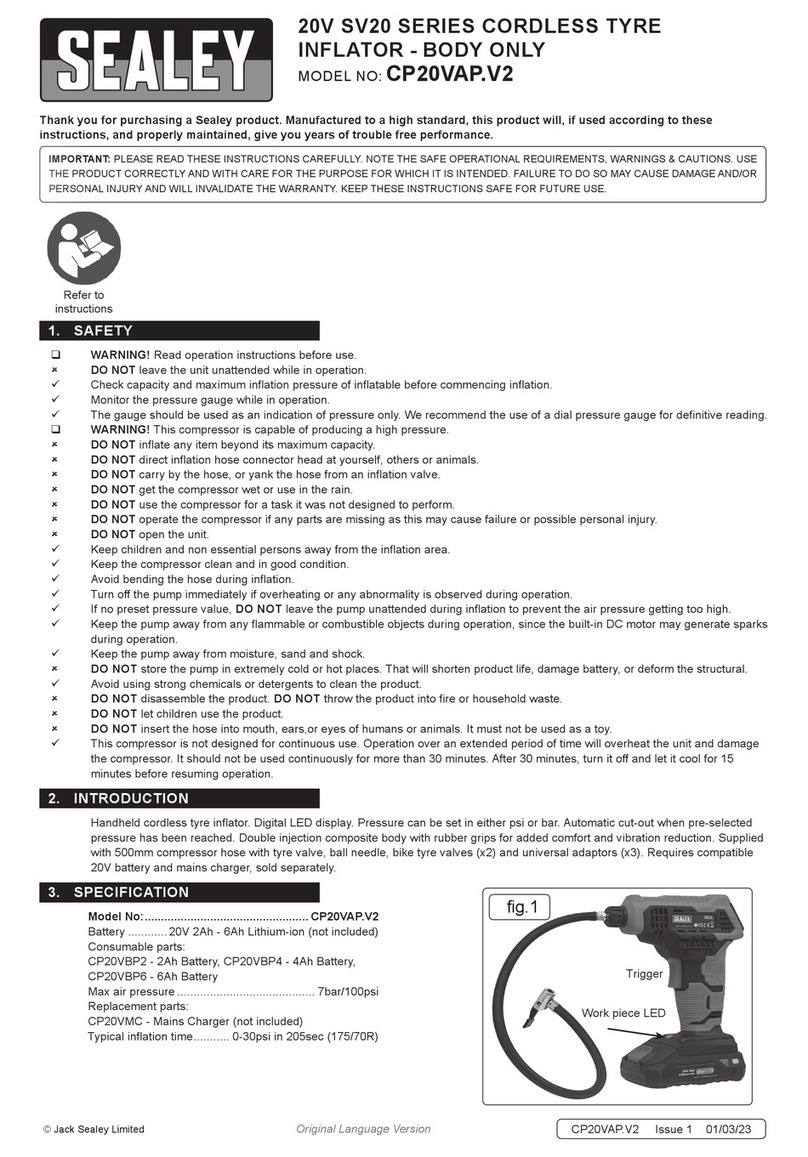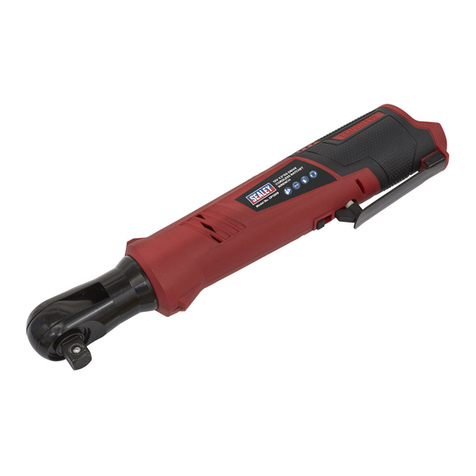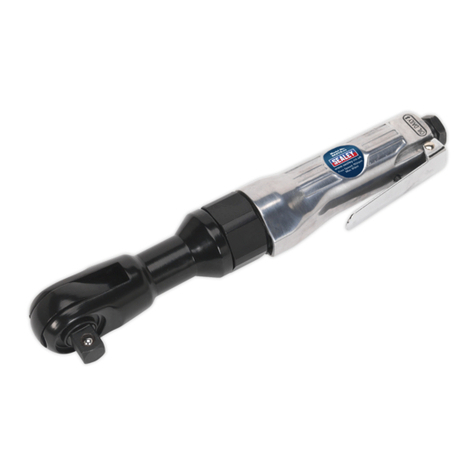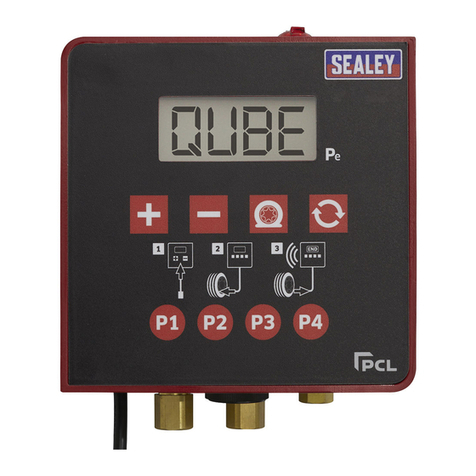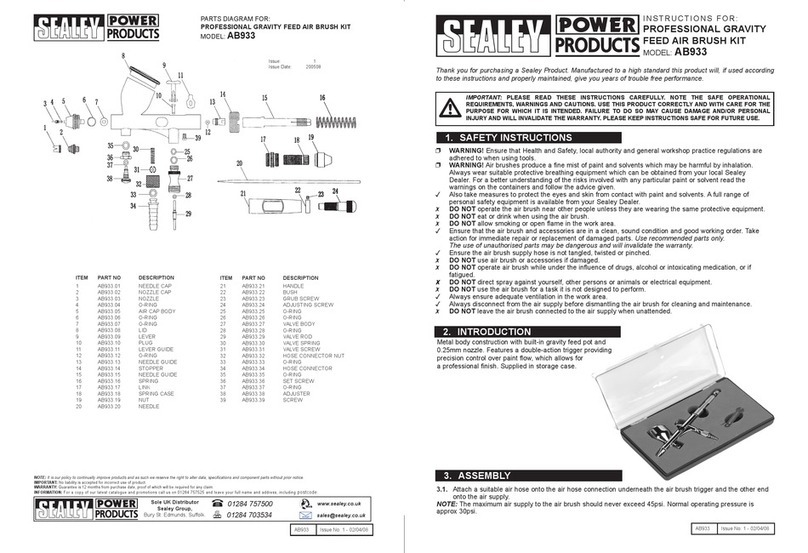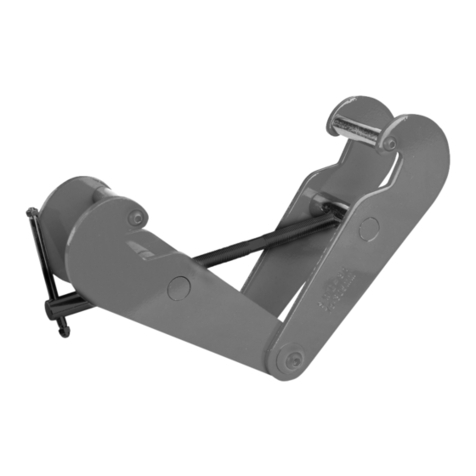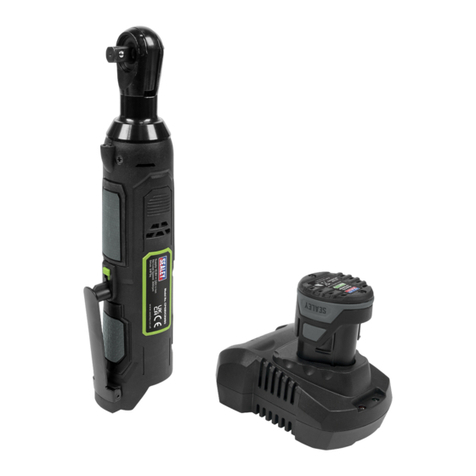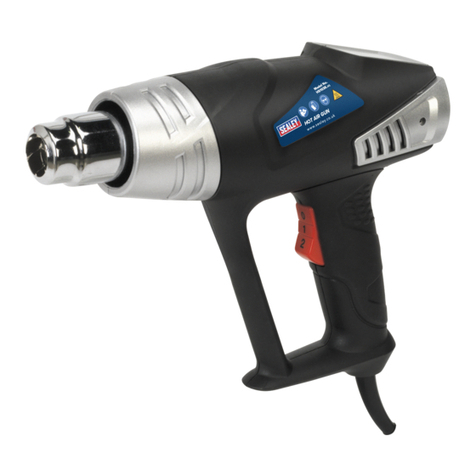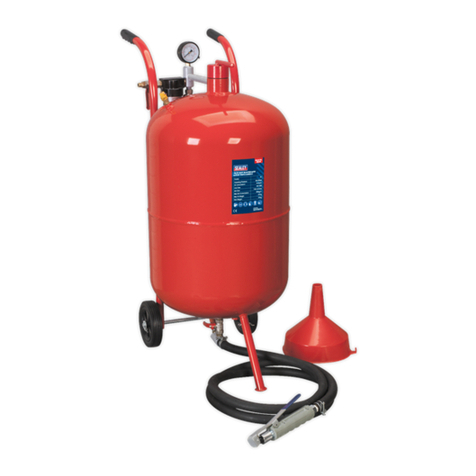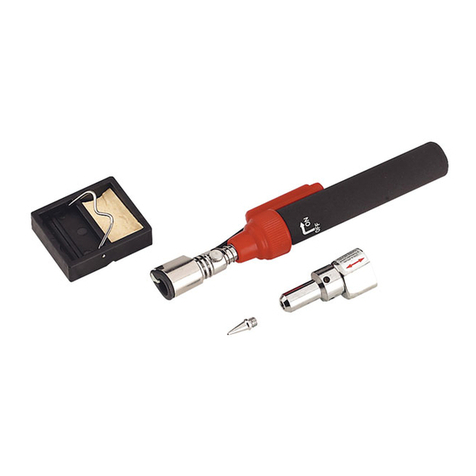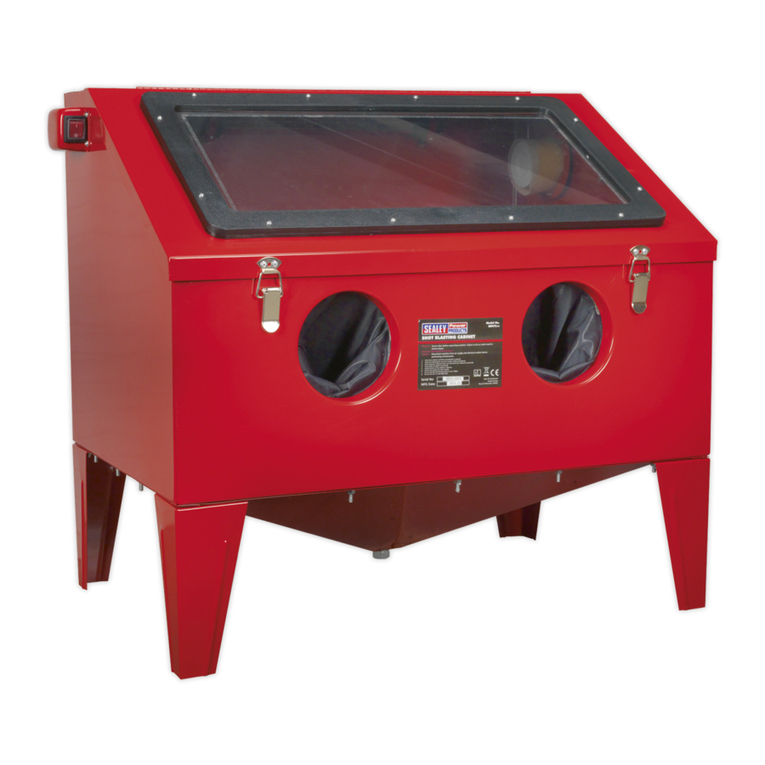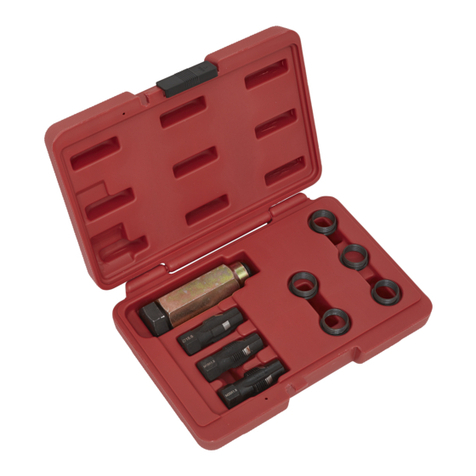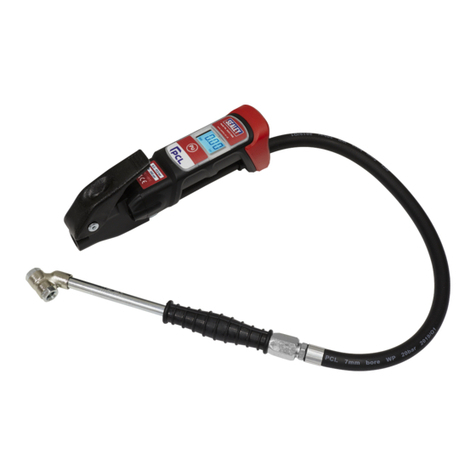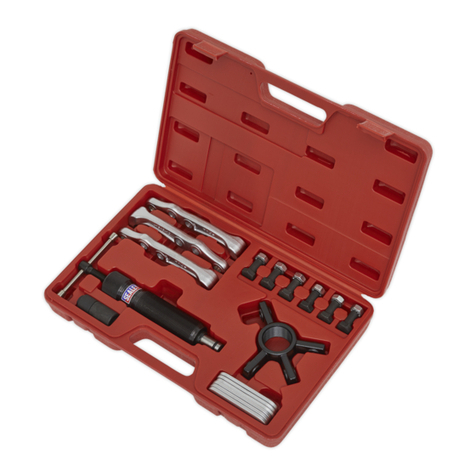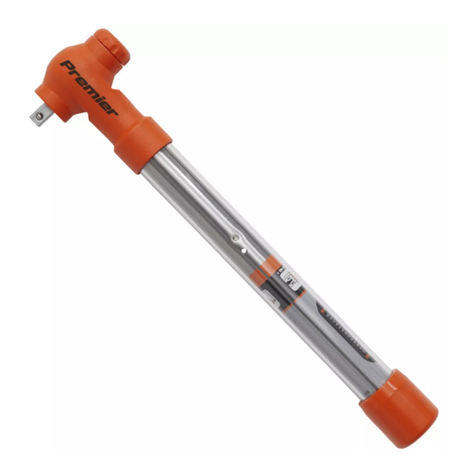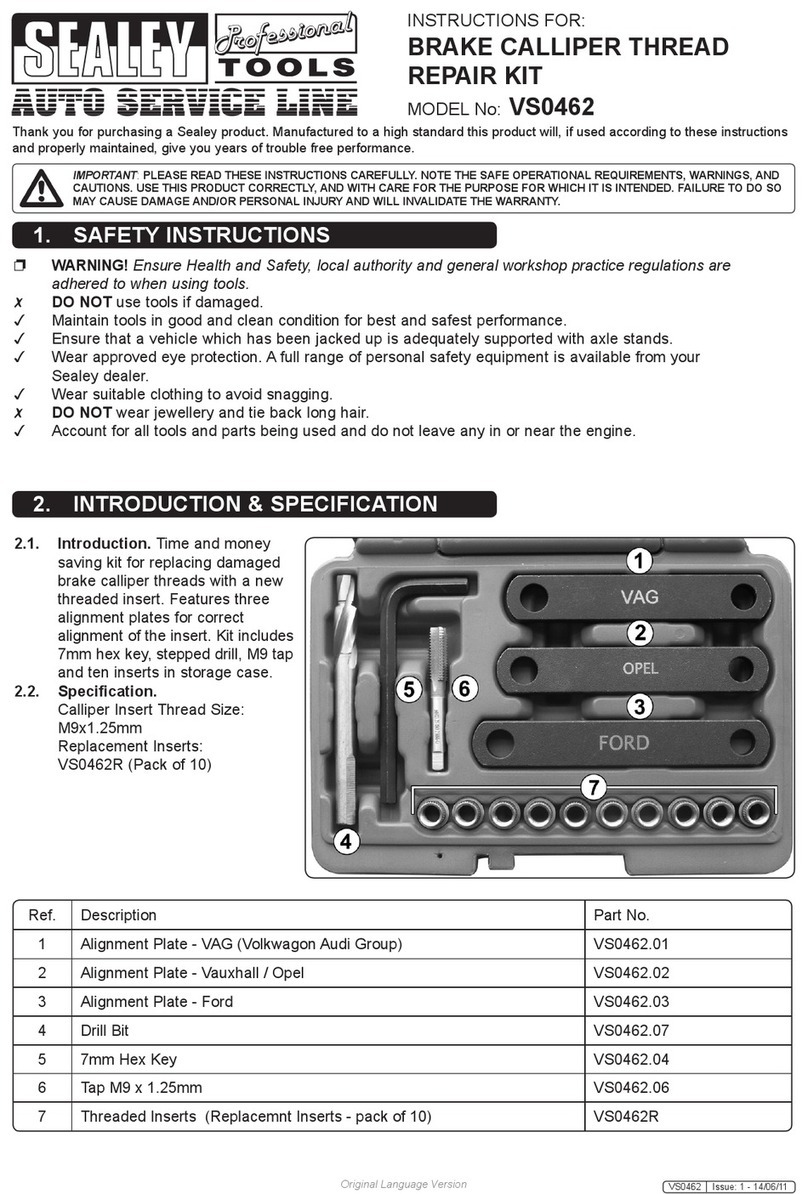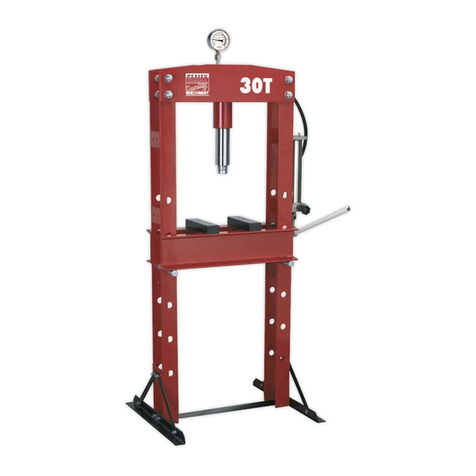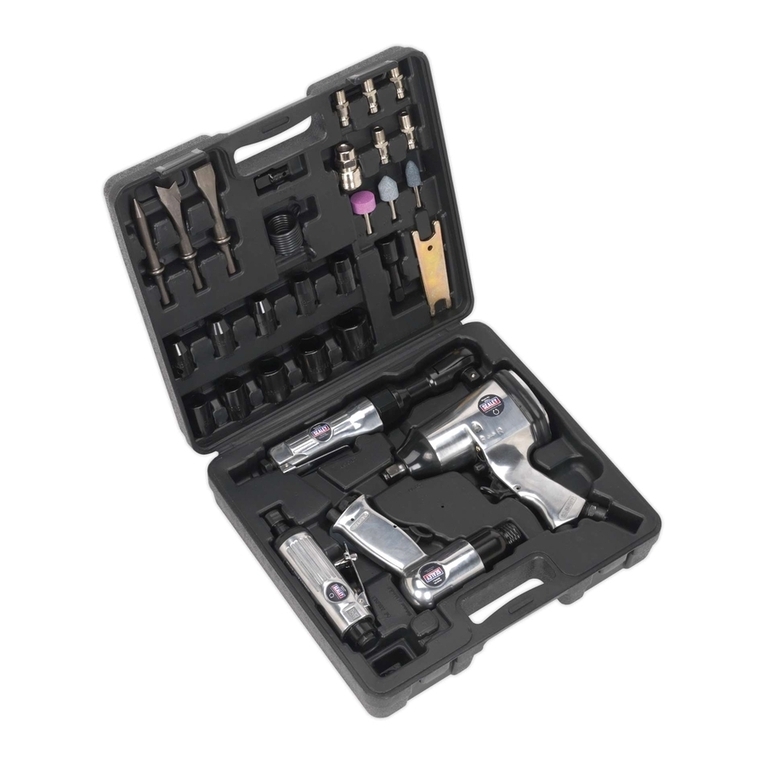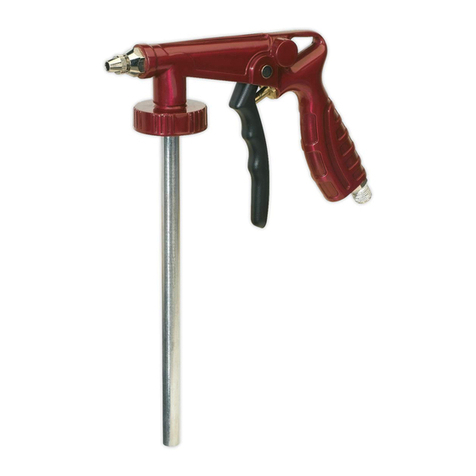
Thank you for purchasing a Sealey product. Manufactured to a high standard this product will, if used according to these instructions
and properly maintained, give you years of trouble free performance.
1. SAFETY INSTRUCTIONS
IMPORTANT: PLEASE READ THESE INSTRUCTIONS CAREFULLY. NOTE THE SAFE OPERATIONAL REQUIREMENTS, WARNINGS & CAUTIONS.
USE THE PRODUCT CORRECTLY AND WITH CARE FOR THE PURPOSE FOR WHICH IT IS INTENDED. FAILURE TO DO SO MAY CAUSE
DAMAGE AND/OR PERSONAL INJURY AND WILL INVALIDATE THE WARRANTY. PLEASE KEEP INSTRUCTIONS SAFE FOR FUTURE USE.
2. INTRODUCTION & SPECIFICATION
Composite cover moulded around lightweight aluminium alloy housing reduces effects of chill on operator’s hands and provides added control.
Air motor with quality bearings for smooth and powerful operation. Exhaust outlet adjusts 360° keeping air flow away from operator. Suitable
for cutting intricate shapes in steel up to 1.5mm thick. Punch and die may be rotated through 360° to aid access and obtain maximum
consumable life. Suitable for the professional workshop.
The recommended air system is shown in fig.1.
3.1. Ensure that the air pressure is set correctly (90psi).
pWARNING! Ensure that the air supply is clean and does not exceed 90psi. Too high an air pressure and/or unclean air will shorten the
life of the nibbler due to accelerated wear, and may cause damage and/or personal injury.
3.2. Drain the compressor air tank daily. Water in the air line will damage the riveter.
3.3. Clean the compressor air inlet filter screen weekly.
3.4. Line pressure should be increased to compensate for unusually long air hoses (over 8 metres). The minimum hose bore should be
10mm and fittings must have the same inside dimensions.
3.5. Keep hoses away from heat, oil and sharp edges. Check hoses for wear, and make certain that all connections are secure.
3. AIR SUPPLY
fig.1
Maximum Cutting Capacity:........1.5mm (mild steel)
Free Speed:............................................... 3200spm
Operating Pressure:.........................................90psi
Air Consumption:.............................................. 4cfm
Air Inlet Size:..................................1/4"BSP Female
Weight:...........................................................0.93kg
WARNING! Ensure that Health & Safety, local authority and general workshop practice regulations are adhered to when using this
equipment. See the notes at the end of the instructions regarding prolonged exposure to vibration.
Familiarise yourself with the applications, limitations and potential hazards peculiar to the nibbler.
WARNING!Disconnect the nibbler from the air supply before changing accessories, servicing or performing any maintenance.
Maintain the nibbler in good condition (use an authorised service agent).
Replace or repair damaged parts. Use genuine parts only. Unauthorised parts may be dangerous and will invalidate the warranty.
Keep the work area clean, uncluttered and ensure that there is adequate lighting.
Keep the nibbler clean for best and safest performance.
WARNING! Always wear approved eye or face protection when operating the nibbler.
Maintain correct balance and footing. Ensure the floor is not slippery and wear non-slip shoes.
Remove ill fitting clothing. Remove ties, watches, rings and other loose jewellery and contain, and/or tie back, long hair.
Keep the nibbler away from your body and at a safe distance from others.
Keep children and unauthorised persons away from the work area.
Secure unstable workpiece with a clamp, vice or other adequate holding device.
Ensure that spent punchings are disposed of correctly and do not cause a hazard.
WARNING! Ensure that the correct air pressure is maintained and not exceeded.
Keep air hose away from heat, oil and sharp edges. Check air hose for wear before each use and ensure that all connections are secure.
DO NOT use the nibbler for any purpose other than that for which it is designed.
DO NOT operate the nibbler if any parts are damaged or missing.
DO NOT carry the nibbler operating the trigger, by the hose or yank the hose from the air supply.
DO NOT get the nibbler wet or use in damp or wet locations or areas where there is condensation.
DO NOT allow untrained persons to operate the nibbler.
DO NOT operate the nibbler when you are tired or under the influence of alcohol, drugs or intoxicating medication.
DO NOT direct air from the air hose at yourself or others.
When not in use disconnect from the air supply and store in a safe, dry, childproof area.
Original Language Version SA649 Issue: 1 - 25/04/13
© Jack Sealey Limited 2013
INSTRUCTIONS FOR:
AIR NIBBLER PREMIER
MODEL No: SA649
Noise Power:.................................................97dB(A)
Noise Pressure:.............................................86dB(A)
Measured vibration emission value (a)...... 8.73m/s²
Uncertainty value (k):..................................3.33m/s²
